The Italian Dolomites are the swishest ski scene in the world
Blessed with immaculate slopes, toasty mountain refuges and rich culinary traditions, peak skiing and tantalising dining go hand in hand in this wintry wonderland.
I learned to downhill ski at an early age, but for some reason I always felt like a shiftless outlier among my friends and family. Everyone else I knew wanted to be the first person on the lift and the last one down, with only a quick break for lunch, regardless of the weather. My favourite part was a long lunch in a cosy hut in the middle of a mountain pass. I love to ski, but only when the sky is blue. I assumed there was something weak about my constitution and left it at that. Until I finally experienced Italy’s Dolomite Alps and found my true home.
Here, the question skiers – even guides – ask themselves as they load their equipment into the gondola is not “Which run?” but rather “Where should we eat our next meal?” The skiing conditions in the Dolomiti Superski area – which connects 12 ski resorts, 450 lifts and about 1200 kilometres of runs – in this picture-perfect region north of Venice and south of Austria are exceptional. Most importantly, though, this is Italy: the dolce vita lifestyle is strong. The scale and diversity of the dramatic limestone peaks, which often glow a golden pink just before dusk, is awe-inspiring, but so are its foamy cappuccinos and fizzy Aperol Spritzes. Just as spectacular are the ambitious meals served in rifugi, the remote mountain huts scattered throughout the region.
“Italians only ski when the sun is out, the trails are perfectly groomed, and they spend as much time eating as they do on the slopes,” said Agustina Lagos Marmol, the Argentinean-born founder of specialty travel company Dolomite Mountains. She had joined my guide, Marika Favé, and I for dinner at Baita Dovich, a rustic albergo with a sophisticated kitchen, lovingly run by the Chizzali family, at the foot of the Marmolada mountain range. Thanks to Lagos Marmol and Favé, on my four-day, three-night ski safari I rarely skied a run more than once and never repeated a meal. Using skis, gondolas and the occasional car transfer, we crossed almost 160 kilometres of the Dolomiti Superski area, starting from the family-friendly Hotel La Majun in La Villa and ending in the jet-set resort town of Cortina d’Ampezzo.
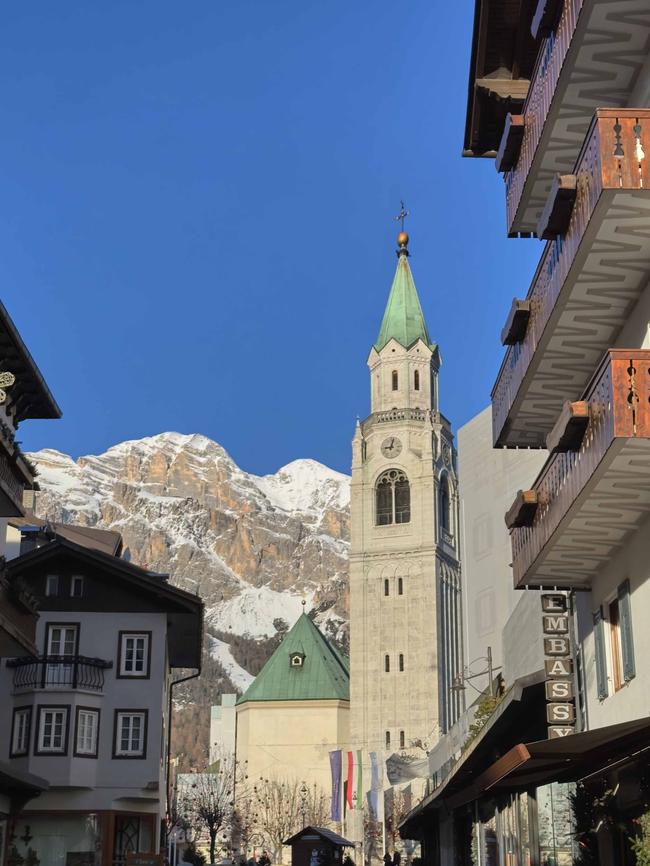
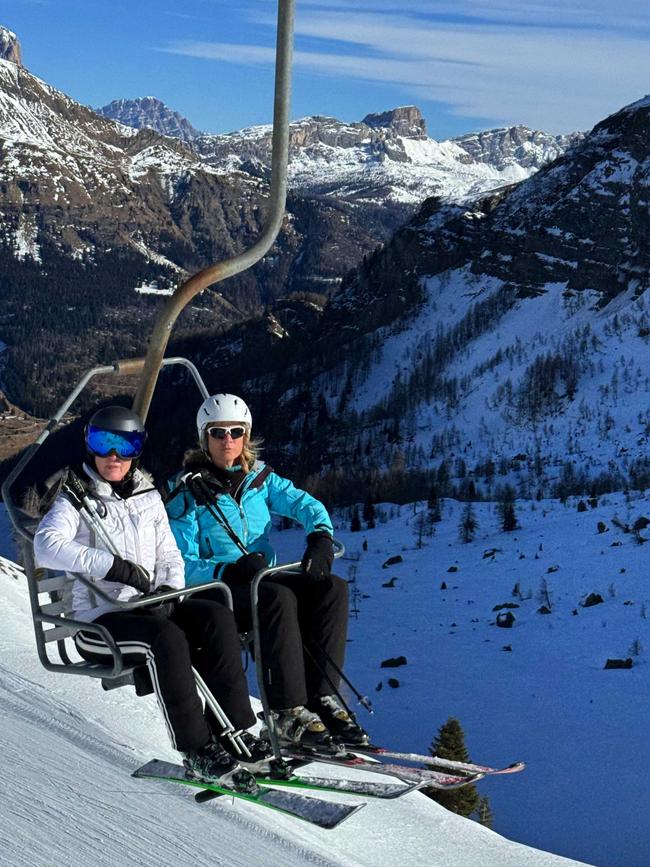
-
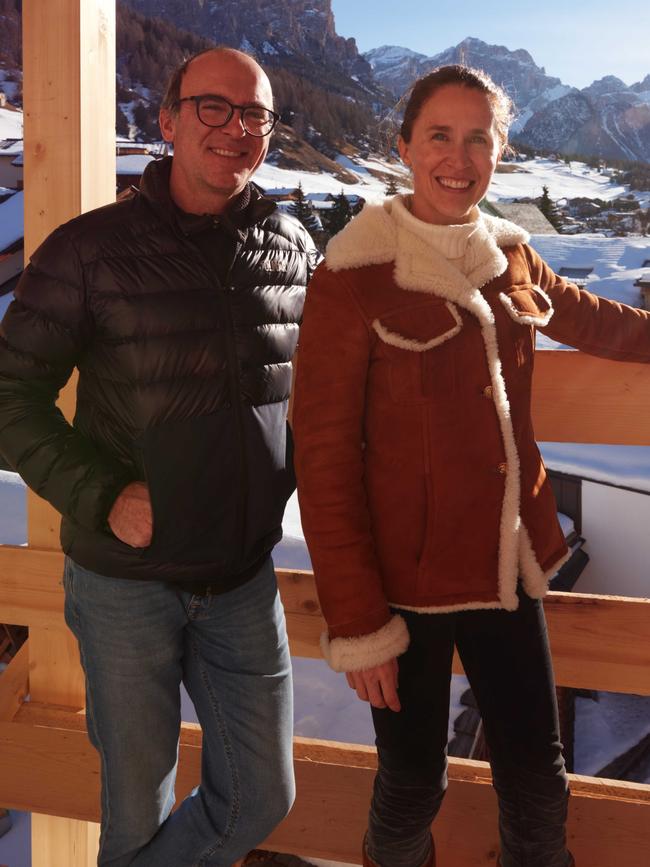
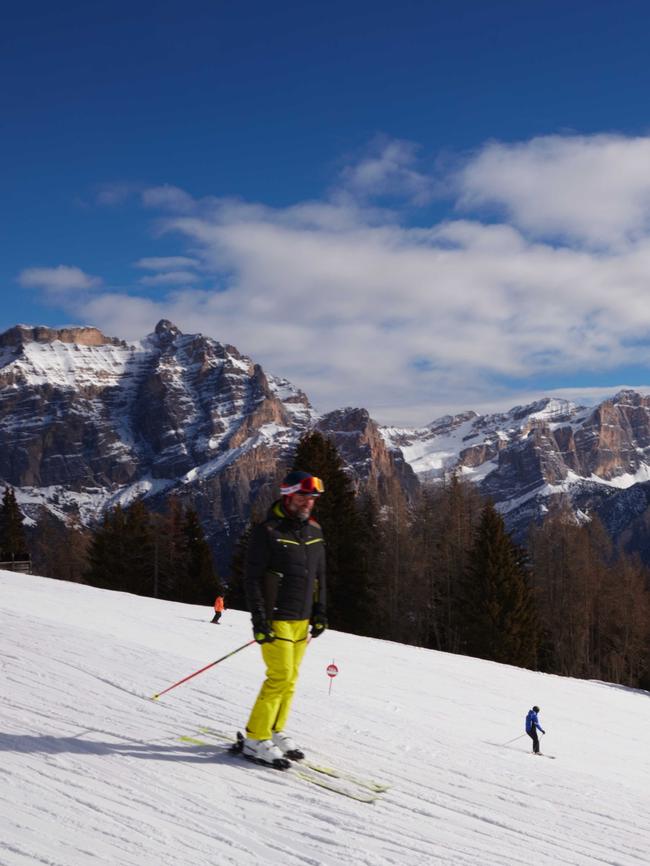
It was Lagos Marmol who had helped to establish this uniquely well-organised gourmet ski safari, along with hotelier Hugo Pizzinini, owner of the area’s most renowned five-star property, Rosa Alpina (soon to be the first Aman hotel in the Dolomites), and Norbert Niederkofler, South Tyrol’s only three-Michelin-starred chef, who worked for years at Rosa Alpina’s restaurant St Hubertus. “Less than a decade ago many of the mountain huts were serving the same dishes,” Pizzinini told me of the family-owned inns. “Norbert and I started encouraging the owners to specialise, to serve six or seven dishes that the others did not have.”
Today, the Dolomites is home to the best food in the Alps. This gourmet status is also due to its hard-working farmers and complex history. The French have their glamorous ski resorts in the Savoie region, and Austria and Switzerland also claim several world-class ski-in restaurants, but before World War I much of the Dolomites had belonged to the Austro-Hungarian Empire. Add that rich culinary tradition to the area’s Italian and Ladin influences (the local Ladin people trace their language and culture back to the Roman Empire) and you have a dynamic gastronomic destination that has the most closely clustered number of Michelin stars in the country.
And, of course, now that the Winter Olympics are coming to Cortina d’Ampezzo in 2026, the heat is on. This is the moment to put the Dolomites firmly on the international map – not just for the ski season, but as a year-round destination. “In the summer you can hike from meal to meal,” said Lagos Marmol, who also organises hut-to-hut treks and mountain-biking tours, among other adventures. I noted that down as I tucked into a plate of zesty spaghetti alla chitarra. At the moment, though, I was more than happy to be led through this snow-covered Shangri-La by the lively and skilled Favé, one of the only women in the country to be a certified mountain guide.
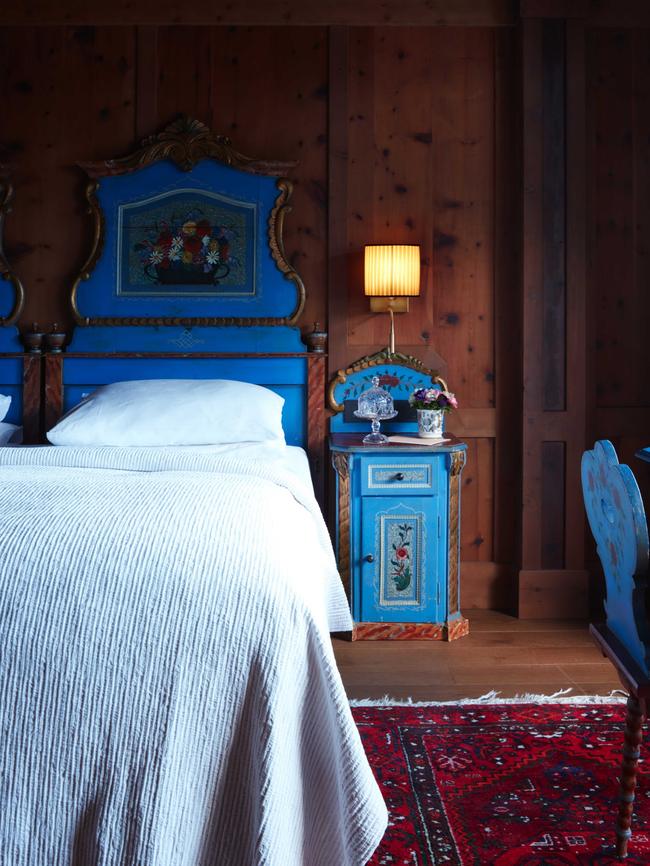
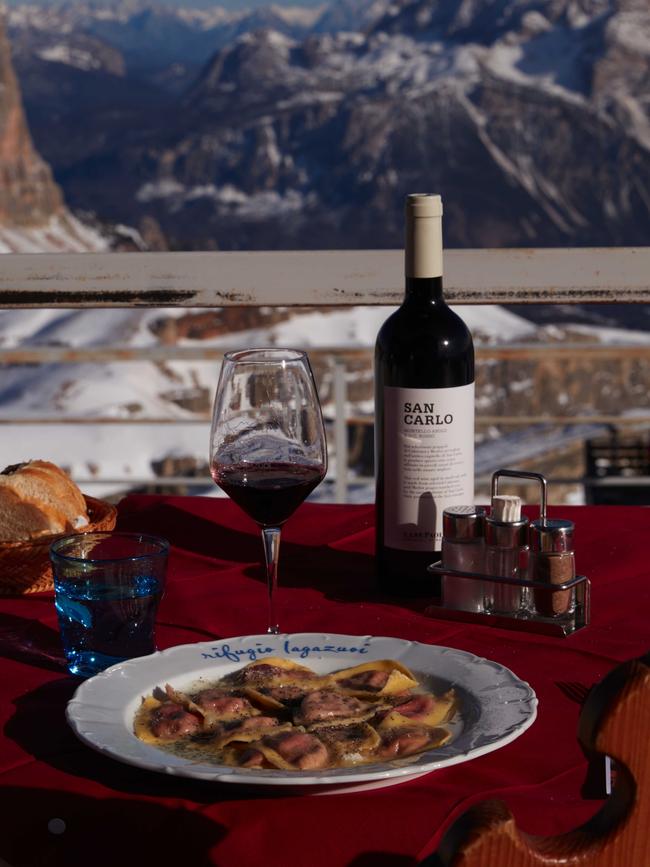
-
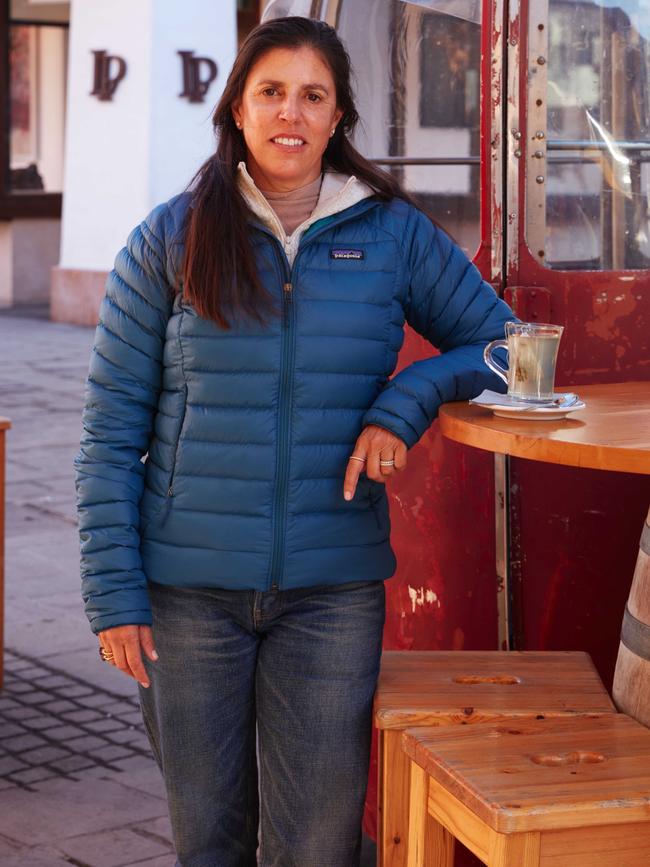
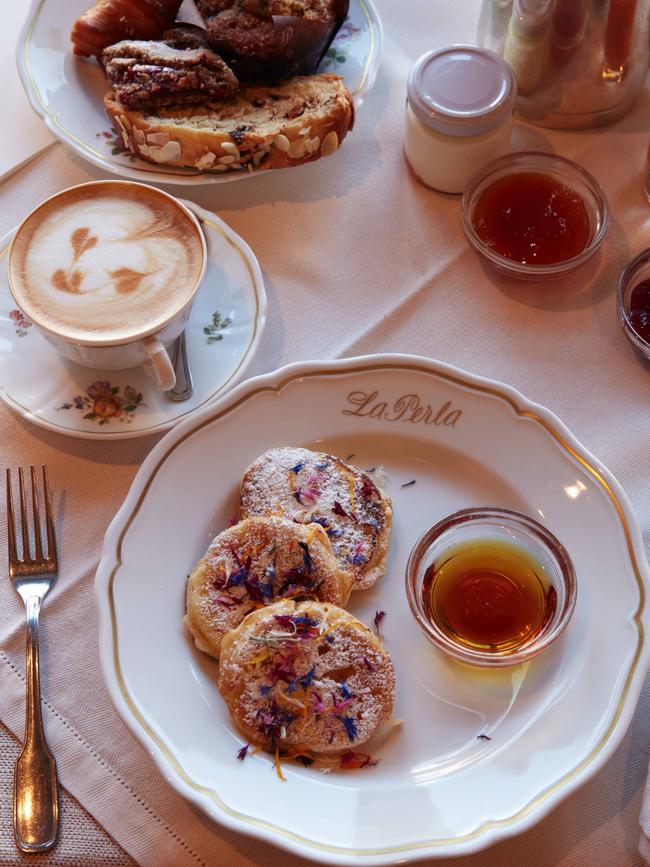
Despite the lack of blue sky on the first ski day, we managed to complete much of the Sellaronda, a legendary circuit that loops around the dramatic plateau-shaped Sella massif, fuelled by an exceptional lunch of lobster pasta (the seafood is delivered each day from the Venice lagoon) at Baita Gherdeccia, an ambitious restaurant that looks out over the valley. We landed softly late that afternoon at one of the smartest lodges in the region: the 51-room La Perla is set within a traditional Tyrolean-style wooden building in the charming village of Corvara. Like all the best hotels and restaurants in the Dolomites, La Perla is still run by the same family, the Costas who opened it back in 1956. Often the interiors of small mountain inns are kitschy, but at La Perla every detail, from silverware to flower arrangements, is ultra-chic.
My bedroom, which had been renovated this past year, defined the height of alpine luxury: elegant wood panelling; robin’s-egg blue hand-painted headboards and side tables, and a marble-clad bathroom with fragrant bath products. Dinner was served in one of several connected small wood-lined “stube”; my table was covered with a red and white lined tablecloth and punctuated with several small vases of fresh flowers. Someone pointed out to me one of the Costa brothers – the two now run the hotel – who was seated in the next room with his wife and daughter, overseeing every interaction with laser-beam focus.
I woke up the next morning to clear skies and an impressive breakfast buffet of freshly pressed juices, local honeys, homemade marmalade and breads and pastries, which tided me over for the next several hours of fantastic skiing conditions. My guide Favé, who’s extremely proud of her Ladin roots, shared thoughts on her heritage, which can be traced back at least two thousand years. “To be Ladin is more than just speaking the language,” she explained. “It’s an identity, a culture, even the traditional architecture, the way we continue to care for these mountains.” For lunch that day, at the stylish Ütia Bioch hut at an elevation of 2000 metres, we tried some delicious Ladin dishes: turtres, which are crisp pastries filled with ricotta and spinach, and casunziei, like ravioli filled with spinach, pumpkin or beetroot and drizzled with browned butter.
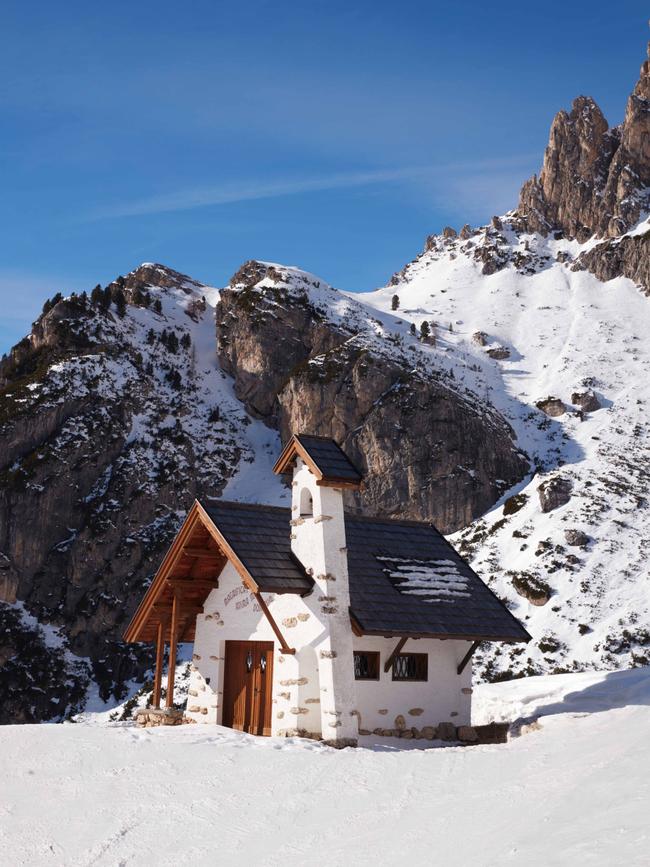
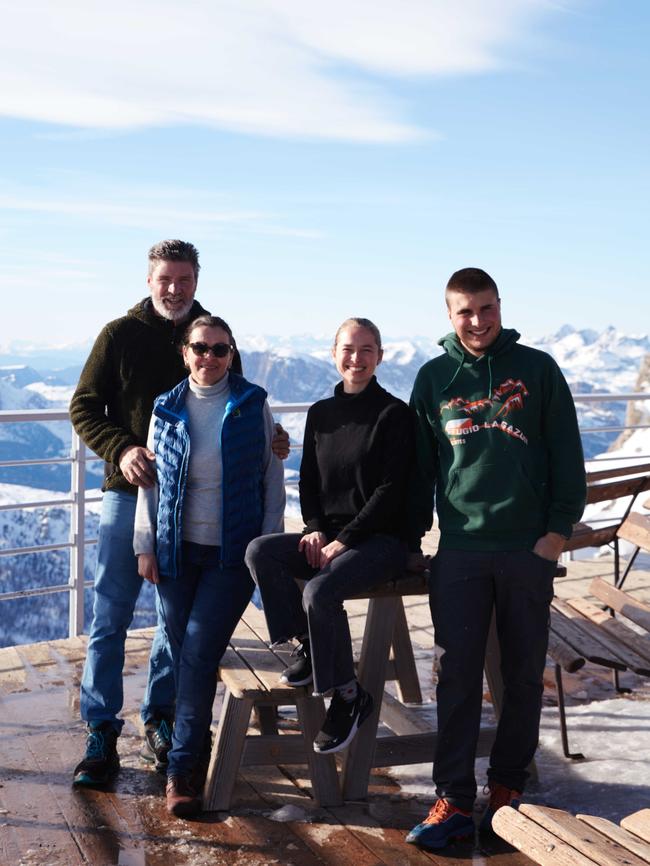
-
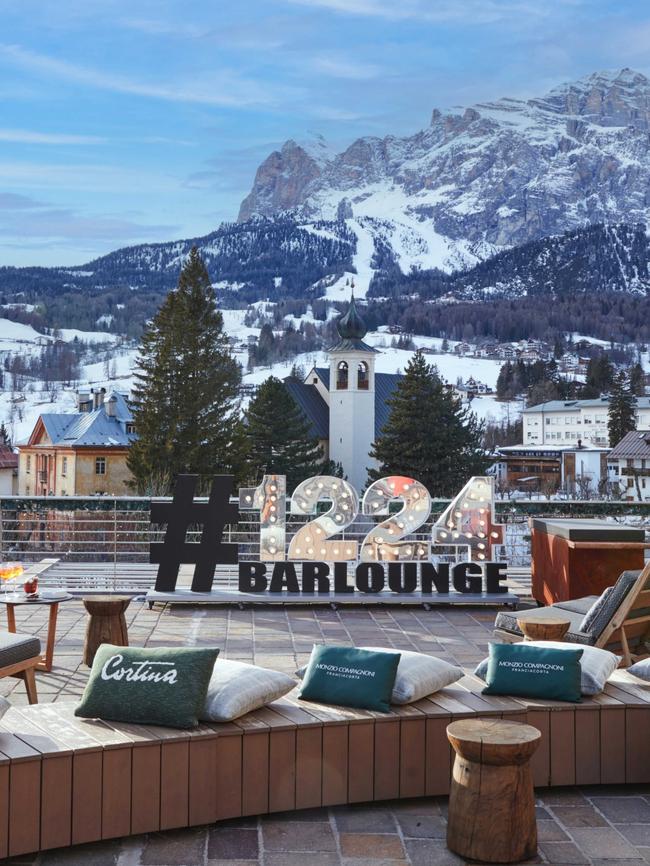
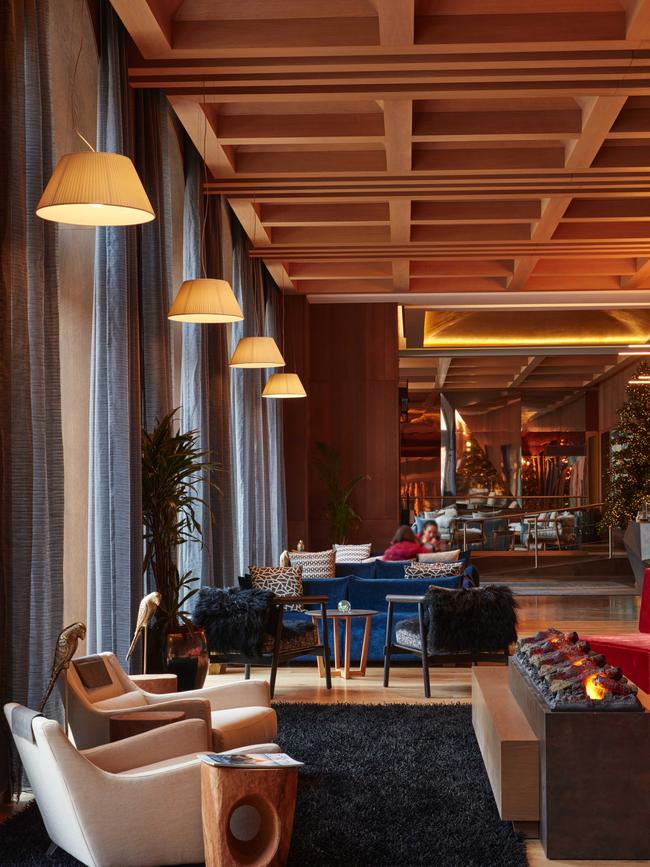
After an espresso, we headed towards Arabba, a Ladin-speaking village in the Veneto region, and by the late afternoon we had made it to the foot of the Marmolada, the highest mountain in the region and nicknamed “Queen of the Dolomites”. We headed there the next morning, hopping on an efficient cable-car system that brings skiers up to the top in three sections. We stopped midway to explore the Museum of Great War, a memorial and series of interactive exhibitions highlighting the “White War” and the Italian and Austro-Hungarian soldiers fighting (and dying) during World War I among the treacherous peaks and glaciers of the Alps. It was in 1919, after the war, that South Tyrol, part of the Habsburg Empire since 1363, was handed over to Italy.
All that history made us that much more thankful for the comfort of the cable car taking us to the viewpoint looking out in every direction. It also made us grateful for the joyful long run back down and our lunch a few hours later, which we had at an altitude of 2752 metres on the top of another mountain, Mount Lagazuoi. Rifugio Lagazuoi was already busy when we arrived, seemingly every member of the Pompanin family serving their guests. While the patriarch, Guido Pompanin, regaled us with stories about when Sly Stallone filmed the movie Cliffhanger here, we dug into beetroot-filled casunziei topped with poppy seeds.That afternoon, as the light was fading, we finally arrived in Cortina. I exchanged goodbyes with Favé and checked in to the elegant Hotel de Len. That night I had yet another stunning meal – roasted cauliflower served with a herby green sauce and a cheese platter sourced from local makers – in the hotel’s dining room. Later, when I closed my eyes, visions of exhilarating runs down slopes replayed in my mind on repeat. My last thought, before I drifted off into a deep sleep, was that few places can rival the Dolomites for deliciously otherworldly beauty.
WHERE TO STAY
The most-coveted lodgings in the Dolomites, from Cortina d’Ampezzo to Madonna di Campiglio.
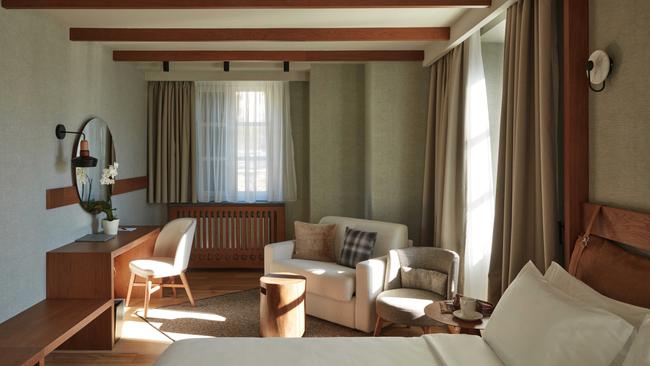
Best for families and urbanites: Grand Hotel Savoia
This landmark property has reigned as the grande dame of Cortina since it opened in 1912. Over the years, luminaries from Sophia Loren to Winston Churchill have rested their heads here. Now managed by the Radisson Collection, and recently upgraded, it is one of the standout lodgings in the Dolomites and ideal for families with children as well as those who crave a few sophisticated flourishes. There are 132 well-designed rooms, an expansive spa and several bars and eateries where one could happily eat at every night. I appreciated its central location – it’s fun to be near all Cortina’s fashionable shops and cafés – but I rarely went out for dinner. Between the 1224 Bar Lounge and Ristorante Savoy, there was ample choice. Luigi Sarsano, the resort’s executive chef, said that his team proudly make everything by hand, from pastries to the pasta and pizza dough. grandhotelsavoiacortina.it
Best for couples: Hotel de Len
The name means “made of wood” in Ladin, which is appropriate for this discreet, 22-room and suite property in central Cortina that resembles a minimalist chalet. With walls of old, upcycled fir, larch and Swiss pine, and decked out in bright modernist furnishings, the interiors have a sort of alpine wabi-sabi aesthetic, Opened in 2022, the property is managed by the well-regarded San Domenico Hotels, which explains the commendable kitchen – think refined takes on traditional dishes such as venison carpaccio and risotto with goat’s cheese and cotechino (local pork sausage). The most dramatic part of the hotel is the spa, located on the top floor and lined with almost floor-to-ceiling windows. Just sitting in one of the lounge chairs with views of the mountains is enough to lower one’s blood pressure, but there are also saunas and a steam room, as well as a whirlpool that also looks out over the town. hoteldelen.it
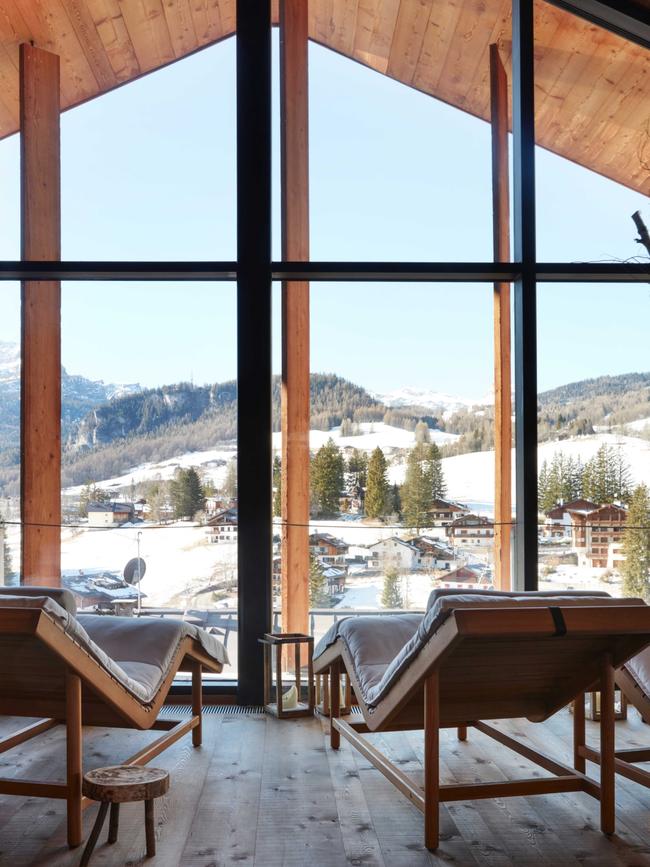
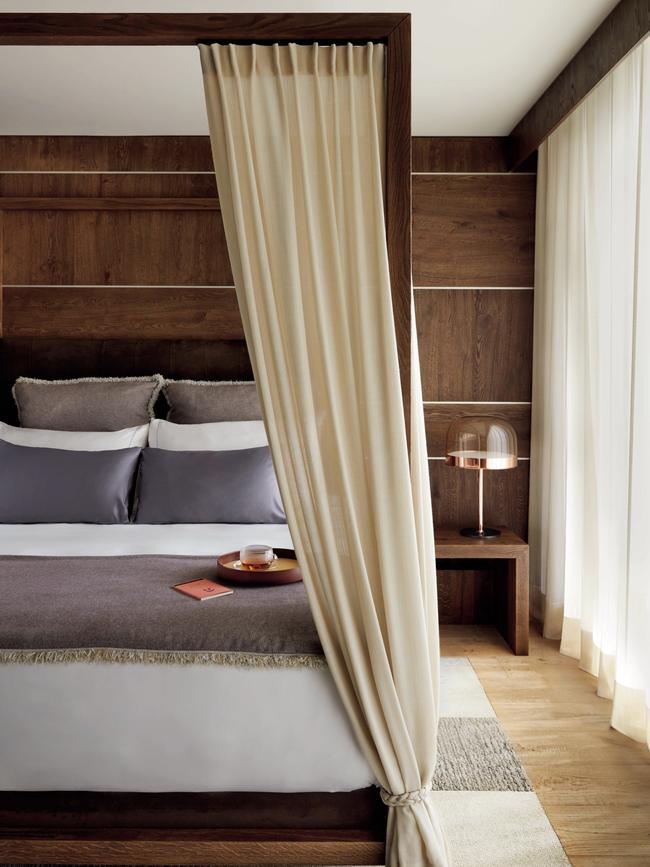
Best for gourmands: La Perla
This intimate, ski-in, five-star property – 51 rooms and suites within a Tyrolean-style building in the small village of Corvara – is truly a gem, one that has been carefully polished over time by two generations of the Costa family. La Perla has evolved gradually, updating small things year after year when it makes sense both aesthetically and sustainably. “We are aware of trends,” noted Marianne Jensen, who works in guest relations. “We want to be timeless, tasteful and sustainable. We don’t use imported materials, for instance.” Next year the spa will be expanded and upgraded, but it’s the culinary offering here that makes it stand out. Chef Simone Cantafio helms both the excellent bistro (Les Stües) and the Michelin-starred restaurant (La Stüa de Michil). Recently, he launched a project called Incö, a chef’s table hidden in the wine cellar, where he treats a group of about eight people to his favourite dishes while showcasing the best local ingredients. laperlacorvara.it
Best for spa lovers: Lefay Resort & Spa Dolomiti
Set in the village of Pinzolo, near the ski resort of Madonna di Campiglio, Lefay Resort Dolomiti is almost a four-hour drive from Cortina. This part of the Dolomites is less developed and a bit more rugged, but it’s got great downhill skiing. It also has easy access to wilder, off-piste terrain in which one can snow-shoe and cross-country ski for hours. Everything and anything is possible to arrange at the Lefay, a modern alpine complex with a peak-shaped façade built of local wood and glass and 88 suites and 23 residences. The Scandinavian-style interiors, conceived by Studio Apostoli, are full of light and punctuated by stone fireplaces, leather chairs and wooden tables.
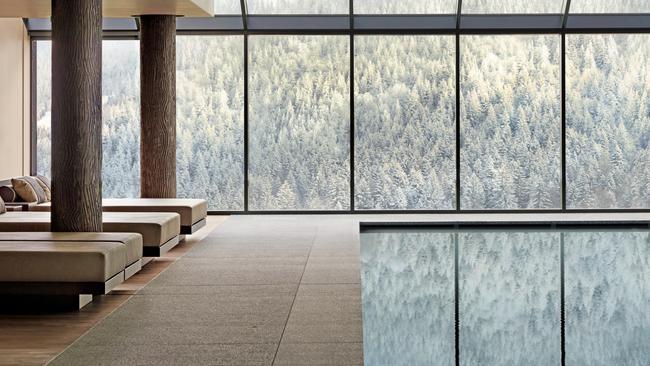
Bedrooms are spacious and comfortable, while service is impeccable – a spa staffer noticed my slippers were wet and immediately had them replaced in my room. Spread over three floors, the spa features a dramatic indoor-outdoor pool, magnesium-enriched whirlpool and various thermal and sauna-based therapy rooms. dolomiti.lefayresorts.com
This story is from the December issue of Travel + Luxury Magazine, out today Friday December 20.



To join the conversation, please log in. Don't have an account? Register
Join the conversation, you are commenting as Logout